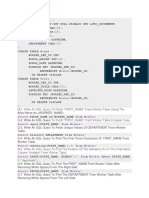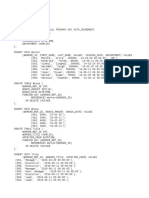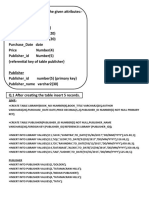0% found this document useful (0 votes)
40 views46 pages50 Most Useful SQL Queriesx
This document serves as a practical guide to the 50 most useful SQL queries, focusing on creating and managing a database, as well as inserting and querying data from various tables such as WORKER, BONUS, and TITLE. Each SQL query is accompanied by a detailed explanation of its purpose and functionality, covering topics like data retrieval, manipulation, and formatting. The document aims to enhance understanding of SQL through hands-on examples and clear instructions.
Uploaded by
Gabriel murilloCopyright
© © All Rights Reserved
We take content rights seriously. If you suspect this is your content, claim it here.
Available Formats
Download as PDF, TXT or read online on Scribd
0% found this document useful (0 votes)
40 views46 pages50 Most Useful SQL Queriesx
This document serves as a practical guide to the 50 most useful SQL queries, focusing on creating and managing a database, as well as inserting and querying data from various tables such as WORKER, BONUS, and TITLE. Each SQL query is accompanied by a detailed explanation of its purpose and functionality, covering topics like data retrieval, manipulation, and formatting. The document aims to enhance understanding of SQL through hands-on examples and clear instructions.
Uploaded by
Gabriel murilloCopyright
© © All Rights Reserved
We take content rights seriously. If you suspect this is your content, claim it here.
Available Formats
Download as PDF, TXT or read online on Scribd
/ 46




















































































